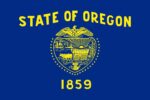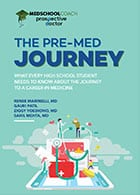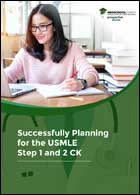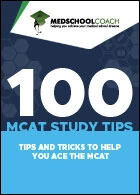
The Ontario Medical School Application Service (OMSAS) Autobiographical Sketch (ABS) is one of the few aspects of your medical school application that you can really customize to help present who you are and where your interests lie. Some tend to feel it is a challenging and time-consuming part of applying to medical schools in Ontario, but it is also where you can showcase your individual accomplishments and background which led you to pursue a career in medicine.. While other aspects of the application will end up just forming a ‘‘grade” (e.g. GPA, MCAT, CASPer), the ABS is a section where you can hopefully appeal to the medical admissions committee on a personal level.
Applying to medical school in Ontario can be a daunting process, but it doesn’t have to be. With appropriate planning and guidance, you can succeed in your application to Ontario medical schools. To start, it is important to best understand the ultimate reason for the Autobiographical Sketch (ABS). The Autobiographical Sketch is used to assess the non-academic qualifications of an applicant. If you are familiar with the AMCAS system in the US, you’re likely aware of both the Personal Statement and Work & Activities sections, which are the main autobiographical portions of the application. For medical schools in Ontario, which use OMSAS, both of these sections are absent. Instead, students are asked to convey important personal information through the school specific supplemental questions if they are available, transcripts and the autobiographical sketch.
For review, the categories available for completion in the OMSAS ABS are:
- Employment
- Formal Education
- Volunteer Activities
- Extracurricular Activities
- Awards and Accomplishments
- Research
- Other
When approaching the autobiographical sketch. It is best to be organized and to start early. Many candidates choose to complete the various categories in a spreadsheet which they later transfer onto the OMSAS website. Unless you are a non-traditional medical school applicant who is applying later in life, your experiences and activities for this section should, fortunately, still be fresh in your mind. The Ontario Universities’ Application Centre (OUAC) recommends initially approaching these categories and activities broadly…simply their advice is “to list all activities that will give the admission committees insight into who you are.” These activities can be both structured (undertaken in a formal organization) and non-structured (Informal and even self-directed.) Structured activities might include things like volunteering for special organizations or events, while non-structured activities might include things like hobbies or recreational activities.
One of the most incongruous aspects of the OMSAS ABS is its open-endedness. It welcomes you to really dig into your experiences to find what’s most meaningful to you, but for many students, the lack of strict direction can feel frustrating. However, if you dedicate proper time and attention to narrowing down and refining the description of your experiences and activities, you will be in good shape to employ some strategy to complete your ABS.
Strategy #1: Quality Over Quantity is important in the ABS
Just because you have the opportunity to have 32 entries, does not mean you have to fill up all 32 entries. Remember, the purpose of the sketch is to demonstrate the essential qualities that medical schools value. You need not provide a comprehensive index of everything you have done over the last 5-7 years. In preparation for drafting your sketch, however, you should begin with quantity and then refine into quality. As the OUAC recommends, a good first step is to create a spreadsheet that you can populate with any and all activities you can think of having occurred since age 16.
Make sure to take the time to be comprehensive here. This is the raw data that you will use to build your final sketch. As you list these activities, organize them into their appropriate category using the list mentioned above. Be sure to include ample details about each activity to access later when you begin editing your sketch entries. Once you have a list of at least 15-20 such entries, begin focusing on those activities that have been most impactful and highlight who you are. For example, you’ll want to list all of your employment history, but if your first job at 17 was a babysitting job and only lasted two weeks, you may consider skipping this in favor of something more impactful and sizable in duration. You will need to provide some level of detail as to why an entry is meaningful, and things like a brief unsubstantial job would be better left out of the ABS.
There’s nothing wrong with including significant and meaningful activities that you participated in for only a short time period (e.g. one day, one week). However, it would be best to minimize listing too many of these activities as it can appear that you aren’t someone that commits to challenges of longer duration. The best activities are those that you sustained for an extended period of time (e.g. at least once a week to over six months or more.) Try to establish that at least one of two things resulted from your participation in the activity. 1. You genuinely provided a benefit to someone or something else such as in an altruistic sense. or 2. You gained valuable personal experience and/or growth that will help you be a better physician someday. Optimal activities will have some component of both of these. Some examples may be:
- Playing a varsity sport at an elite level (personal growth and benefit.)
- Volunteering to collect garbage from a city park (altruistic predominant.
- Volunteering weekly to play with kids at a hospital oncology ward (personal growth and altruistic.)
It is also recommended to be as clear and concise as possible to demonstrate your effective communication skills. The ABS specifically requires you to limit each entry to 150 characters. Using an entry to describe an activity that is less impactful will be challenging, so be sure to take adequate time and refine your entries. It can be the differentiator in demonstrating your communication skills. Likewise, other non-structured activities such as traveling, cultural experiences or having special certificates will also help illustrate your ability to effectively present who you are as an individual to the admissions committee.
Strategy #2: Consider Your Verifiers Early for the OMSAS ABS
For any and all activities other than formal education and scholarships, you must provide a verifier. For structured activities this can be a supervisor or coach. For non-structured activities consider friends, family or neighbors who know you well. Since the range of verfiers is so wide, reach out to potential verifiers early to make sure they are comfortable with you listing them for a specific activity or experience.
Paying attention to what you might include in your ABS in the years preceding the medical school application is helpful, as you can keep track of verifiers more effectively. Consider making an email folder exclusively for items related to your volunteering and other ABS items. This way you can maintain a permanent digital record of what you’ve done. Don’t be shy at the conclusion of activities to request your supervisor provide you with their detailed contact information. Believe it or not, OMSAS requires their name, contact address, email address and phone number. Some verifiers may be people you worked with a few years prior, and while people may move, change their email, etc, it’s unlikely they will change the entirety of their contact information, so do make an effort to get each of these items before you complete your time with them. In the rare case where you genuinely cannot track down your original verifier, work to find someone else who can reasonably vouch for you. Don’t let all your hard work and time investing in an activity or achievement be lost because you’ve lost track of someone.
As you begin to determine which entries you want to keep and refine for your final sketch, be mindful of who you have chosen as your verifier, what they might say, and most importantly that they can be relied upon to respond to a contact request from a medical school. If possible, choose verifiers who can add detail to an entry as well. The desire to try to include high-ranking verifiers may be strong but what really matters most is their reliability and willingness to attest to your involvement in the activity.
Strategy #3: Be Truthful in your OMSAS ABS
Speak honestly and do not embellish a given entry. Ontario admissions committees read thousands upon thousands of sketches each year. Any inclination of insincerity will be detected. If you chose a volunteer experience that was not significantly impactful and try to position it as a life-altering transformation you run great risk. Not only will your verifier most likely not back that up but admissions committees are well-versed in picking up on dishonesty.
One of the skills experienced admissions committee members develop is the ability to piece together a holistic picture of the student whose sketch they are reading. Any entries that appear contradictory to the tone and character of the surrounding entries will be detected. A smart tactic when considering how to present the details of an experience is to simply not exaggerate or embellish.
In conclusion, the most important strategy for creating an excellent autobiographical sketch is time. Start early, be comprehensive and creative and stay organized. Be mindful of the activities and experiences that make you unique and give the entries your due diligence to make you stand out. Lastly, try to enjoy the process as it is a process of reflection. Be confident in who you are and enjoy the opportunity to showcase your individuality giving the admissions committees a great first impression of who you are.





